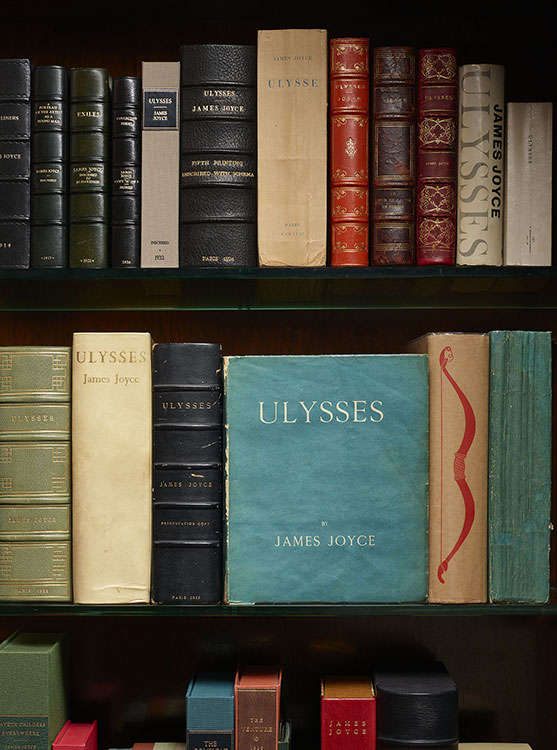
In 1904 Joyce lived in a tower overlooking Dublin Bay. This experience would inspire Ulysses’ first episode, which introduces the young poet Stephen Dedalus. Leopold Bloom, at the novel’s center, is both a cuckolded husband and a figure of rare dignity and humanity. The book takes its structure from Homer’s Odyssey, but it encompasses the language of mass culture. Among the novel’s innovations is its use of stream of consciousness, tracing Stephen’s then Bloom’s thoughts as they wander through Dublin and Molly Bloom’s as she lies in bed.
Joyce struggled to find a publisher willing to take on his novel, largely due to its graphic passages— especially after its serialization in America resulted in an obscenity ruling. Disconsolate, Joyce feared that his book would never come out. In early 1921, however, Sylvia Beach, an American owner of a Paris bookstore, agreed to issue a private edition in France. Published on 2 February 1922, Joyce’s fortieth birthday, Ulysses appeared a month after the treaty establishing Irish independence from Great Britain was approved in Dublin. The book and the country it explores began their new lives in 1922.
Assorted copies of James Joyce’s Ulysses and other works
The Morgan Library & Museum, gifts of Sean and Mary Kelly, 2018.
Joyce had many supporters as he wrote Ulysses, including Harriet Shaw Weaver, who supported him financially, including Margaret Anderson and Jane Heap, who published some episodes of Ulysses in the Little Review in the United States, and including Sylvia Beach in Paris, who realized the problems Joyce was going to face. The book was going to be censored, both in the United States and in the United Kingdom. She was based in Paris where she had a bookstore and she decided, by asking people to subscribe to the printing to actually publish the book privately to make sure that it did appear on Joyce's fortieth birthday, the second of February 1922.
